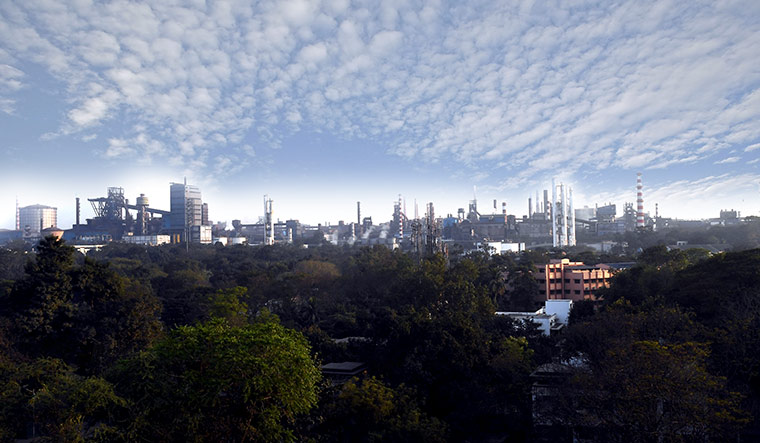“TATA WAS A visionary with political, social and commercial interests and he used them as a single driving force to promote a strong and independent India,” writes Morgen Witzel in Tata: The Evolution of a Corporate Brand. Today, Jamshedpur (earlier Sakchi) in Jharkhand stands testimony to it.
Influenced by Scottish historian, essayist and mathematician Thomas Carlyle, who said the country that makes steel has the gold, Jamsetji Nusserwanji Tata set out to give India iron and steel manufacturing projects. Not only did he travel to America to meet up with industry leaders, he also brought the services of the finest in the business to India to start preliminary scientific investigations, before erecting the steel plant.
Sakchi was an ideal location, owing to the excellent quality of coal to its north, rich iron ore to its south and the port city of Kolkata to its east. Frank Harris in Jamsetji Nusserwanji Tata: A Chronicle of His Life writes about the cosmopolitan nature of Sakchi, thanks to the Americans, Germans and English, who came as crew for the blast furnaces, steel works and the rolling mills, respectively. He also writes about how the Bengalis and Parsis made up the clerical staff and how a few talented Parsis found employment in the mechanical department. “There were a certain number of Austrians, Italians and Swiss, while Chinese were working as carpenters and in the pattern shops,” he writes. The expats also started schools and churches in Sakchi.
From the technical experts that Tata handpicked to his sons, whom he entrusted his ambitious project, nobody disappointed him. Thanks to rather cheap production costs and some of the best modern practices, Tata’s steel plant turned out to be hugely successful.
Though Tata did not live to see the steel plant being formally established, his sons—Dorabji and Ratanji—carried forward his work with gusto. On January 2, 1919, during Viceroy Lord Chelmsford’s visit to the steel plant, in recognition of the plant’s contributions to World War I and in honour of the brain behind the plant, Sakchi was renamed Jamshedpur.
“While the plant got registered in 1907, we started making steel only in 1912,” explains Kulvin Suri, chief of corporate communications, India and SEA, Tata Steel Ltd. “The plant is a logistical marvel. We started with 1,50,000 tonne and today, as we speak, the plant churns out 10 million tonne from the same 1,700 acres. It is one of the most modern steel plants in the world in terms of technology and the product.”
What is really interesting about Jamshedpur, though, is how a city grew around a steel plant. “The Tata Hospital came up in 1908 with just one nurse and one doctor,” says Suri. Soon, a steel company found itself helming the civic and administrative affairs. “Jamshedpur is about 216sqkm and Tata Steel had the jurisdiction of the city from the riverside to the railway,” explains Suri.
Today, Jamshedpur is the only million plus city in India without a municipal body. “The city is named after him, and you cannot have a city named after the founder and mess it up during your charge,” says T.V. Narendran, CEO and managing director, Tata Steel Ltd. “So, for a 1,700-1,800-acre land where we make steel, we are running a township that is 15,000 acres.”
However, a petition is pending in the Supreme Court, demanding that a civic body be constituted in Jamshedpur. But, Narendran insists that it is a well-planned township, with an effective drainage system, availability of drinking water and open spaces, and no power cuts or traffic jams. “Jamshedpur will not be like this, if we have to write the cheque and somebody else is running it. Either we are in it or we are not in it,” says Narendran.
The emotional connect between the city and the company is very high, says Narendran, which “comes because of trust being built over multiple generations”. Cynthia Mercy Anthony, a fourth-generation employee of Tata Steel, seconds that. Anthony, who earlier worked for mid-level organisations and startups, joined Tata Steel as assistant manager, corporate communications and CFE (Centre for Excellence) in 2016. “It is not that I came to Tata as a last resort,” she says. “It is an achievement for me because there were thousands of contenders. You can really have a career in this organisation and you can justify your work experience and your educational qualification.” As for her family, “they are overwhelmed,” she says. “Since childhood, I have seen the pride and prestige they have all felt in working for and being loyal to Tata Steel.”


